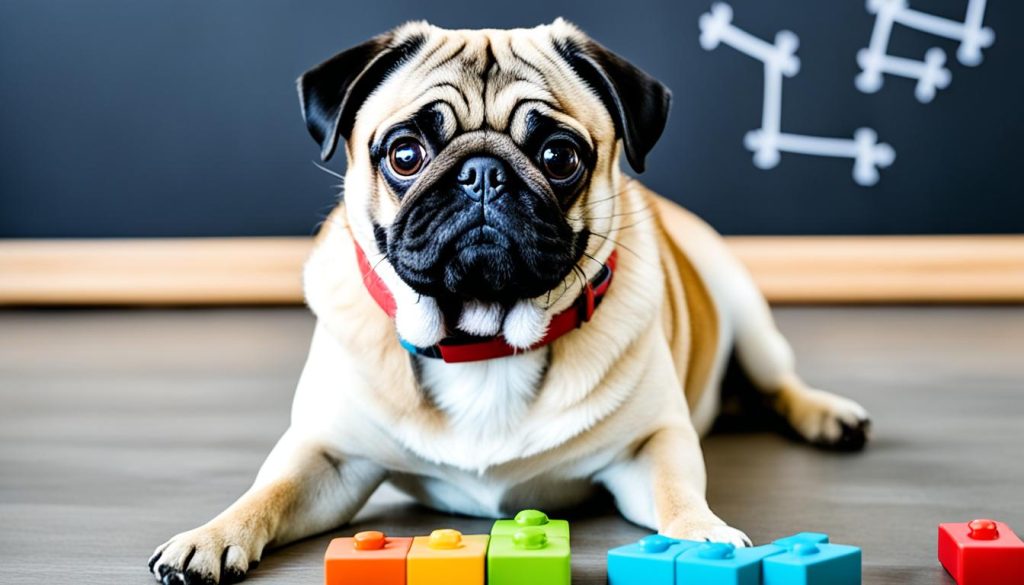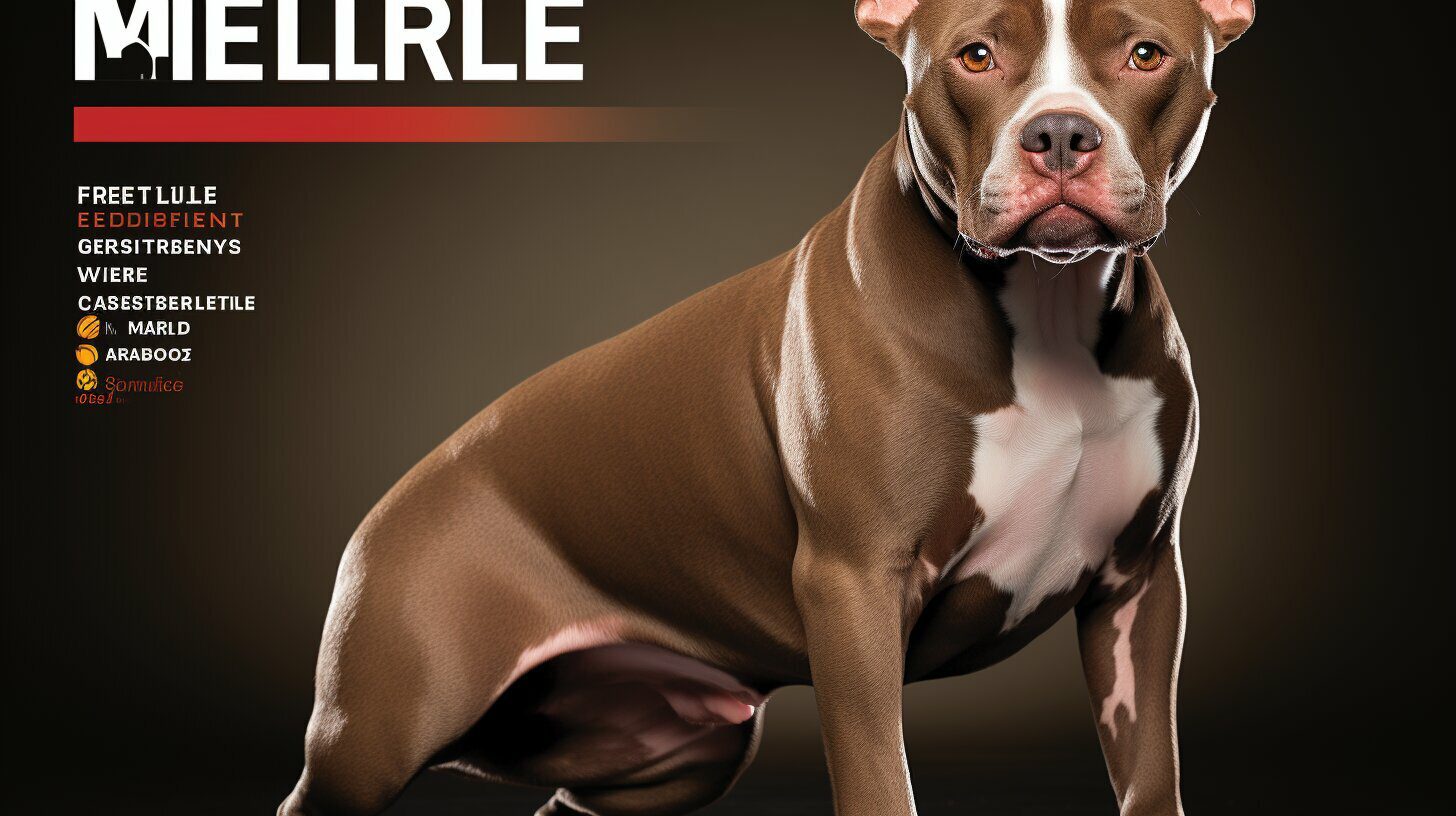Chinese Shar-Peis have long captivated dog lovers with their unique appearance and unwavering loyalty. These distinctive dogs are known for their wrinkled skin and calm disposition. But what about their intelligence? Are Chinese Shar-Peis smart, and do they possess the intellectual prowess that matches their distinct physical features?
In this article, we will dive into the world of Chinese Shar-Peis and uncover the truth about their intelligence. We will explore the characteristics that make this breed stand out in terms of their cognitive abilities, shedding light on the smart traits they possess.
Are Chinese Shar-Peis Smart
- Chinese Shar-Peis have unique physical characteristics that make them visually appealing.
- Their intelligence should not be underestimated, as they possess distinct smart traits.
- Exploring the cognitive abilities of Chinese Shar-Peis helps us understand their overall intelligence.
- Their loyal and calm nature contributes to their potential as intelligent companions.
- Understanding their intelligence can aid in their training and mental stimulation.
Factors Affecting Canine Intelligence
Canine intelligence is influenced by several factors. Inherited traits, training, and the bond between a dog and their owner all play essential roles in shaping a dog’s cognitive abilities.
Inherited Traits
Different dog breeds have been selectively bred for specific qualities, including intelligence. Certain breeds may have inherited traits that make them more naturally inclined towards problem-solving and learning. These traits can contribute to a dog’s overall intelligence.
Training
Training is a crucial factor in developing a dog’s intelligence. Positive reinforcement and early training can improve a dog’s problem-solving abilities and enhance their cognitive skills. By providing consistent training and rewards, owners can help their dogs reach their full intellectual potential.
Bond with Owner
The bond between a dog and their owner can greatly influence the dog’s cognitive capabilities. Dogs that have a strong and trusting bond with their owners often demonstrate better problem-solving skills and exhibit higher levels of intelligence. This bond fosters communication, understanding, and motivation to learn and please their owner.
The Dog Intelligence Index provides a ranking of dog breeds based on their intelligence. This index takes into account various factors, including problem-solving abilities, trainability, and obedience. It is a valuable tool for understanding the different levels of intelligence among various breeds.
| Breed | Intelligence Level |
|---|---|
| Border Collie | High |
| Poodle | High |
| German Shepherd | High |
| Bulldog | Low |
| Bullmastiff | Low |
Types of Dog Intelligence
When it comes to dog intelligence, there are three main types that Stanley Coren, author of “The Intelligence of Dogs,” categorizes. Understanding and appreciating these different types can help us better appreciate the unique abilities of our furry friends.
Adaptive Intelligence
Adaptive intelligence refers to a dog’s problem-solving abilities and their capacity to learn from experience. Dogs with high adaptive intelligence are quick learners, able to analyze situations, and find solutions to challenges they encounter. This intelligence is highly valuable in various environments, such as working dogs, search and rescue operations, and even as household pets.
Instinctive Intelligence
Each dog possesses a degree of instinctive intelligence specific to its breed. Instinctive intelligence relates to the breed-specific instincts that dogs inherit and their ability to naturally respond to certain situations. For example, herding breeds have innate herding instincts, while hunting breeds instinctively know how to track and retrieve prey. Instinctive intelligence is an essential factor in understanding a dog’s behavior and their inclination towards certain activities.
Working/Obedience Intelligence
Working/obedience intelligence varies by breed and measures how quickly a dog learns from humans and obeys their commands. Some breeds have a natural aptitude for understanding and executing tasks given by their owners, while others may require more extensive training. Dogs with high working/obedience intelligence are often sought after for roles in search and rescue, therapy, and service work.
In summary, dogs possess a range of intelligence types, including adaptive intelligence, instinctive intelligence, and working/obedience intelligence. By understanding these distinct forms of intelligence, we can better appreciate the skills and abilities that make our canine companions so exceptional.
Ranking of Intelligent Dog Breeds
When it comes to dog intelligence, some breeds stand out for their exceptional cognitive abilities. The Dog Intelligence IQ Index provides valuable insights into the intelligence levels of different breeds. Let’s explore the rankings and discover the brightest dogs and those with a lower degree of working/obedience intelligence.
Brightest Dogs
Border Collies, Poodles, and German Shepherds have consistently been recognized as some of the brightest dogs. These breeds display remarkable problem-solving skills and possess a natural aptitude for learning. Their intelligence and trainability make them excellent working dogs, excelling in activities such as herding, obedience, and agility.
Above Average Working Dogs
Several other breeds demonstrate above-average working intelligence and excel in specific tasks. Breeds like Golden Retrievers, Doberman Pinscher, and Labrador Retrievers consistently show high levels of intelligence and trainability. With the right training and guidance, they can master various commands and tasks with ease.
Average Working/Obedience Intelligence
Many popular dog breeds fall into the category of average working/obedience intelligence. These breeds, such as Beagles, Bulldogs, and Dalmatians, possess an average level of intelligence and can learn basic commands and tricks. While they may require more repetition and patience during training, they still make great companions.
Lowest Degree of Working/Obedience Intelligence
Some breeds, like Bulldogs and Bullmastiffs, have a lower degree of working/obedience intelligence compared to others. These breeds may require extra patience, time, and specialized training techniques to learn new commands and tasks. However, they excel in other areas, such as companionship and affection.
| Breed | Intelligence Category |
|---|---|
| Border Collie | Brightest Dogs |
| Poodle | Brightest Dogs |
| German Shepherd | Brightest Dogs |
| Golden Retriever | Above Average Working Dogs |
| Doberman Pinscher | Above Average Working Dogs |
| Labrador Retriever | Above Average Working Dogs |
| Beagle | Average Working/Obedience Intelligence |
| Bulldog | Average Working/Obedience Intelligence |
| Dalmatian | Average Working/Obedience Intelligence |
| Bullmastiff | Lowest Degree of Working/Obedience Intelligence |
Evaluating Pug Intelligence
Pugs are often unfairly labeled as unintelligent, but their cognitive abilities should not be underestimated. While they may face challenges in training and problem-solving tasks due to their stubbornness, pugs can still learn basic obedience commands and tricks. Despite their reputation, pugs possess unique qualities that make them highly desirable pets.
One of the misconceptions about pugs is their trainability. Some may assume that their stubborn nature hinders their ability to learn, but with patient and consistent training, pugs can achieve success. It’s important to use positive reinforcement techniques and reward-based training to motivate and encourage their progress.
In terms of problem-solving skills, pugs may not excel in complex tasks compared to some other breeds. However, they can still learn to navigate simple challenges and adapt to daily routines. Their intelligence may be more evident in their ability to understand and respond to human emotions, making them highly empathetic companions.
Pug intelligence stereotypes often overshadow their exceptional qualities as pets. These adorable dogs are known for their loving nature, companionship, and adaptability to various living environments. Their warm and affectionate personalities make them wonderful family pets, and their adaptability allows them to thrive in apartments or more spacious homes.
It’s important to remember that intelligence is not the sole measure of a dog’s worthiness as a pet. Pugs may not possess the problem-solving skills of some other breeds, but their unique qualities more than compensate for it. Their loyal and affectionate nature, combined with their adaptability, make them cherished companions for individuals and families alike.

- Pugs can learn basic obedience commands and tricks with patient and consistent training.
- While not proficient at complex problem-solving tasks, pugs can adapt to daily routines and simple challenges.
- Pug intelligence stereotypes often overshadow their loving nature, companionship, and adaptability to various living environments.
Training and Mental Stimulation for Pugs
Training pugs can be an enjoyable and rewarding experience when done using effective techniques. Positive reinforcement, consistency, and patience are key to teaching your pug essential commands and good behavior. By using rewards, such as praise, treats, or playtime, you can encourage your pug to learn and obey commands.
Pugs are highly sociable dogs that thrive on mental stimulation. To keep them mentally engaged and prevent boredom, incorporate activities that challenge their minds. Puzzle toys are a great way to provide mental stimulation for your pug. These toys present a fun challenge that encourages problem-solving skills and keeps their minds active.

In addition to puzzle toys, brain games are another effective way to stimulate your pug’s cognitive abilities. These games include activities such as hide-and-seek, searching for treats, and interactive toys that require problem-solving. Playing brain games with your pug not only exercises their brains but also helps to strengthen the bond between you.
Consistency is vital when training and providing mental stimulation for your pug. Set aside regular training sessions and playtime to reinforce learning and keep their minds engaged. Make the activities enjoyable and rewarding to motivate your pug to participate.
Remember, a well-trained and mentally stimulated pug is a happy and well-adjusted pet. By using positive reinforcement, incorporating puzzle toys and brain games, and maintaining consistency in training, you can help your pug develop their cognitive abilities and enjoy a fulfilling and enriched life.
Conclusion
Chinese Shar-Peis are not typically considered one of the smartest dog breeds. Their intelligence may not rank among the highest, but it is important not to underestimate their cognitive abilities. Factors such as inherited traits, training, and the bond with their owner can greatly influence their intelligence.
On the other hand, pugs possess unique qualities that make them stand out as pets. Despite their reputation for stubbornness, pugs can still be trained and taught basic obedience commands and tricks. While they may face challenges in problem-solving tasks, their loving nature and adaptability to different environments make them wonderful companions.
It is crucial for pug owners to engage in effective training techniques using positive reinforcement and consistency. Providing mental stimulation through activities like puzzle toys and brain games can also contribute to their cognitive development. By embracing these practices, pug owners can help their furry friends reach their fullest potential.






